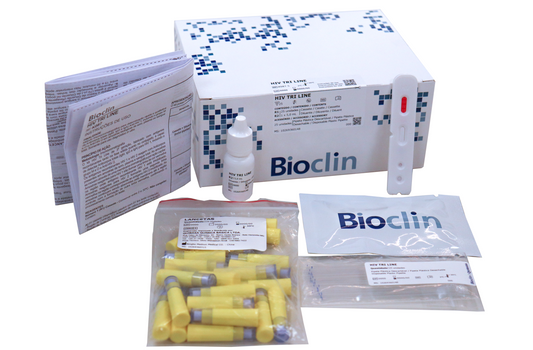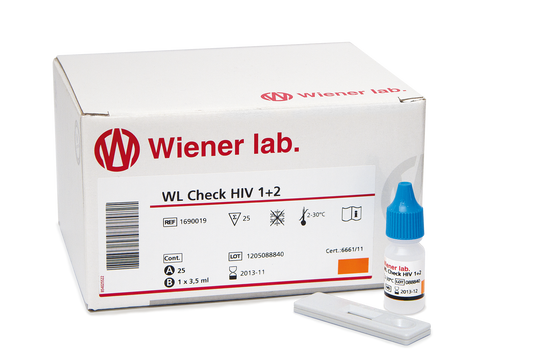-
Bioclin HIV Triline (Professional)
Vendor:Bioclin / Quibasa Química Básica LtdaRegular price $0.00Regular priceUnit price per -
First Response HIV 1+2 / Syphilis Combo Card Test (Professional)
Vendor:Premier Medical Corporation Private LimitedRegular price $0.00Regular priceUnit price per -
First Response HIV 1-2.O Card Test, Ver. 2.0 (Professional)
Vendor:Premier Medical Corporation Private LimitedRegular price $0.00Regular priceUnit price per -
MERISCREEN HIV 1-2 WB (Professional)
Vendor:Meril DiagnosticsRegular price $0.00Regular priceUnit price per -
WL Check HIV 1+2 (Professional)
Vendor:Wiener Laboratorios S.A.I.C.Regular price $0.00Regular priceUnit price per
Collapsible content
Why diagnose HIV?
Sustainable Development Goal (SDG) 3 and related target 3.3 are: “By 2030, end the epidemics of AIDS, tuberculosis, malaria and neglected tropical diseases and combat hepatitis, water-borne diseases and other communicable diseases”. This can only be achieved by prioritizing the prevention, diagnosis and treatment of these infections in key populations and focusing on impact.
The Joint United Nations Programme on HIV/AIDS (UNAIDS) set HIV coverage targets for 2025 as part of its global strategy to end AIDS, which applies to all populations:
- 95% use combination prevention;
- 95% of people living with HIV know their HIV status; 95% of
people living with HIV who know their status initiate treatment; - 95% of people on HIV treatment are virally suppressed and 95% of women access HIV and sexual and reproductive health services.
(Consolidated guidelines on HIV, viral hepatitis and STI prevention, diagnosis, treatment and care for key populations. Geneva: World Health Organization; 2022)
What are the key populations for HIV testing?
The WHO guidelines outline a public health response to HIV, viral hepatitis and sexually transmitted infections (STIs) for 5 key populations (men who have sex with men, trans and gender diverse people, sex workers, people who inject drugs and people in prisons and other closed settings).
All five key populations are is proportionately affected by HIV, and in almost every setting have a higher prevalence and incidence than people outside of these groups. HIV epidemic models, which look beyond what are termed “static” modes of transmission (namely, looking at ongoing transmission over time, among networks of people rather than just incidence at one time point), show that preventing new infections and reducing viral load among key populations living with HIV has greater impact on ongoing transmission and population incidence and prevalence than focusing on lower-risk networks of people outside key population groups
(WHO 2022)
What is the known relationship of HIV and other Sexually Transmitted Infections (STIs)?
HIV infection is more likely to occur if another STI is present and vice versa, creating synergies and syndemics which are often overlooked. For example, STIs increase infectiousness of people living with HIV who are not on treatment by increasing the viral concentration in the genital tract, and by increasing the potential for HIV transmission . Genital herpes and syphilis almost triple the risk of HIV acquisition; while women living with HIV are at high-risk of infection with HPV
and are approximately six times more likely to develop cervical cancer.
(Consolidated guidelines on HIV, viral hepatitis and STI prevention, diagnosis, treatment and care for key populations. Geneva: World Health Organization; 2022)












